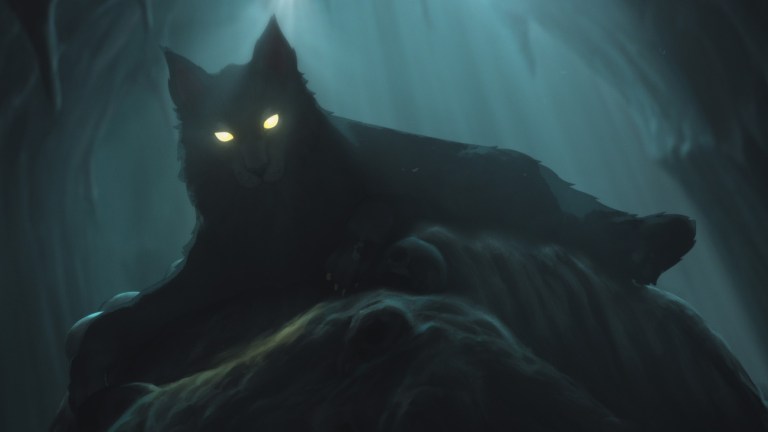The Sandman: What is “A Dream of a Thousand Cats” and “Calliope”?
Netflix is adding one more episode to The Sandman's hit first season, adapting two of the best stories from the original comic book run.

This post contains spoilers for The Sandman season one and beyond.
“Ideas in abundance.” Believe it or not, that’s a curse pronounced by Morpheus in “Calliope,” one of the best stories in The Sandman. “Ideas in abundance” sounds like a particularly strange curse for The Sandman, the seminal Neil Gaiman comic book series so rich in concepts and themes that the Netflix adaptation retains much of its depth, even as it necessarily cuts or reimagines some elements. Fans of the series will get to see more of those abundant ideas soon, as Netflix has announced a surprise 11th episode to The Sandman season 1, which adapts not only “Calliope” but also another fan-favorite tale, “A Dream of a Thousand Cats.” Both stories flesh out Dream’s world and the rules of the Dreaming but “Calliope” has deep implications for Morpheus’s larger career arc, paving the way for the end of his story.
What is “The Dream of a Thousand Cats”?
Originally published in The Sandman #18 (1990), “A Dream of a Thousand Cats” follows a kitten to her first gathering of cats. There, she and the others listen to an old cat called the Prophet, who tells her audience about a revelation she was given by the Cat of Dreams. While in a period of deep sorrow, the Prophet slept and visited the Dreaming, where the Cat of Dreams – Morpheus, in cat form – revealed an earlier world, in which giant cats ruled over tiny human beings. These cats domesticated humans, hunting them for sport or forcing them to brush their fur. But all of that changed one night, when the humans dreamed of a different world, one in which humans ruled and cats were pets. So powerful and widespread was the dream that, when the humans and cats awoke, the dream had come true.
Netflix uses experimental animation techniques to capture the hallucinogenic imagery of the illustration by Kelly Jones and Malcolm Jones III and the colors from Robbie Busch. Director Hisko Hulsing combines real oil paintings, done on canvas, with classical 2D animation and computer-assisted 3D animation. The voice cast includes Killing Eve’s Sandra Oh as the Prophet and Rosie Day as the kitten. Human couples will be voiced by stars of Staged, David and Georgia Tennant, and Michael Sheen and Anna Lundberg.
What is “Calliope”?
Outside of an occasional reference here and there, “A Dream of a Thousand Cats” is a standalone story, one that has no larger stakes for the tragedy of Morpheus. That’s not the case for the other story adapted in episode 11, “Calliope.” Originally published in 1990’s The Sandman #17, “Calliope” feels like another morality tale about humans who dabble in a domain not meant for them. It follows writer Richard Madoc, whose writer’s block prevents him from following up his hit first novel. In an act of desperation, Madoc acquires from an older writer Calliope, the youngest of the muses from Greek mythology. Ignoring her protestations, Madoc abuses Calliope and reaps the benefits of the inspiration she provides – until Morpheus hears her cries.
For this adaptation, Gaiman once again taps Doctor Who alum and casts Arthur Darvill as Madoc. A far cry from his lovable Rory Williams, or even his slightly more duplicitous Rip Hunter from Legends of Tomorrow, Darvill has the unenviable task of making the craven Madoc seem understandable, if not exactly sympathetic. Fellow Doctor Who actor Derek Jacobi will play Erasmus Fry, the author who initially enslaved Calliope, while Greek actor Melissanthi Mahut plays the titular muse. Audiences will best know Mahut as the voice of Kassandra in the Assassin’s Creed video game series or as Mita Xenakis in Eurovision Song Contest: The Story of Fire Saga. As Calliope, Mahut must carry the weight of years in captivity after centuries of inspiring humanity’s greatest storytellers.
Why Does Calliope Matter?
On the surface, “Calliope” seems like a standard Sandman tale, with another foolish human such as Roderick Burgess or John Dee, in motivation or punishment. But “Calliope” tells us more about Dream’s relationships and personal failings, both of which become major drivers in later parts of his story. Calliope gets captured during Morpheus’s imprisonment by Burgess, and thus cannot help her when she calls out.
But that’s not the only reason that he does not come to her aid. Calliope and Dream were once lovers, and the two had a son together, Orpheus. If you know your Greek mythology (or Broadway musicals), you know that Orpheus doesn’t exactly have the greatest life, which leads to Morpheus turning his back on his son. The strife between the two allows an in for Dream’s jealous siblings, the twins Desire and Despair, who use Morpheus’s mixture of kindness and cruelty to move against their brother, leading to the destruction and recreation of the Dreaming.
Beyond its setup for the end of Dream’s story, Calliope also enlarges themes and plot points already at work in the Netflix series. We’ve already seen indications of Dream’s arrogance and cruelty, most notably when he destroys Lyta Hall’s lost husband Hector right in front of her and eliminates wayward nightmare Gault for trying to help Jed Walker. We’ve also seen indications of Dream’s capacity for cruelty against former lovers, as he encounters past partner Nada in episode 4 “A Hope in Hell.” There, we learn that Dream condemned Nadu to an eternity in Hell for breaking his heart, and still refuses to free.
As Gaiman unfolds Dream’s story over the original 75-issue run of The Sandman, it becomes less the tale of a wronged character re-establishing his life and more of a grand tragedy, in which Dream learns too late the cost of his arrogance and disregard for others. As the introduction of a former lover and the mother of his child, “Calliope” plays a key role in that larger tale.
